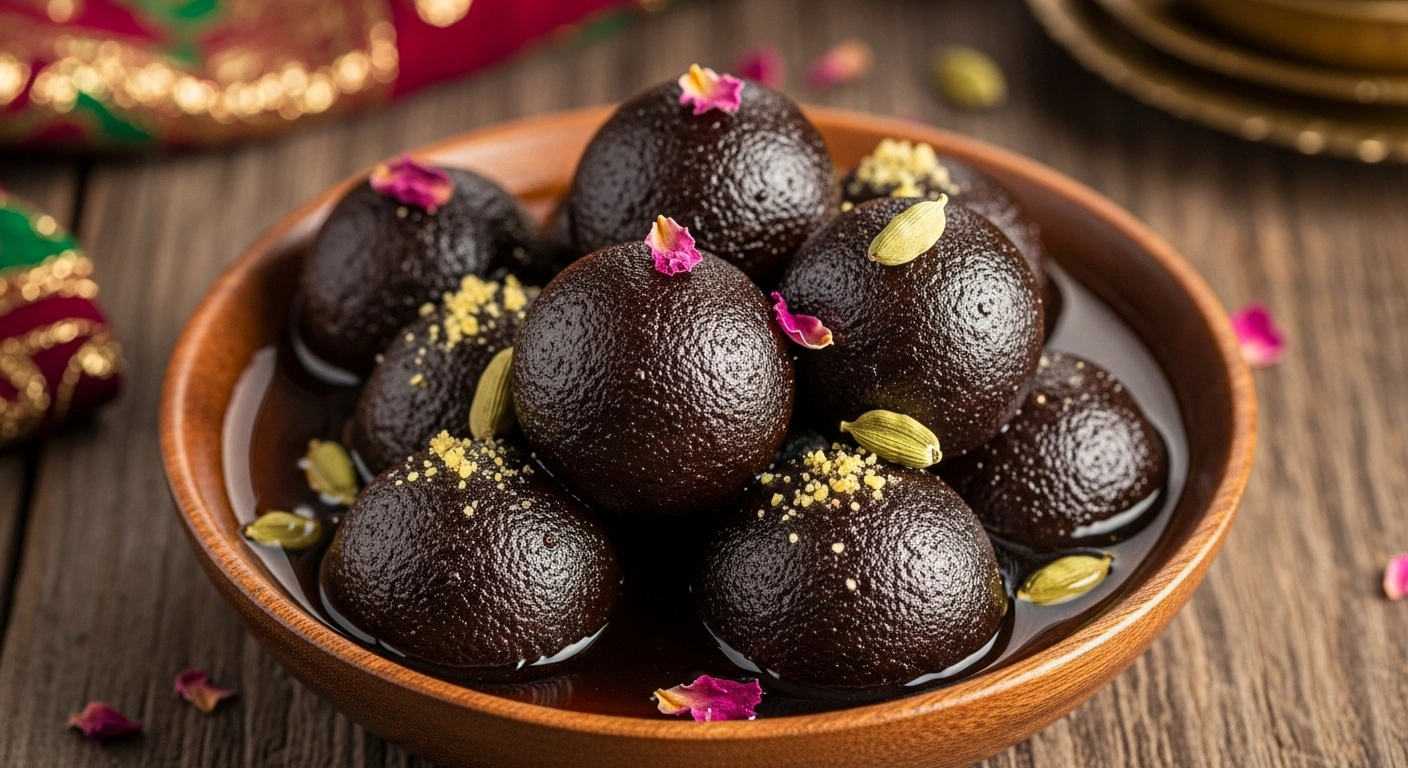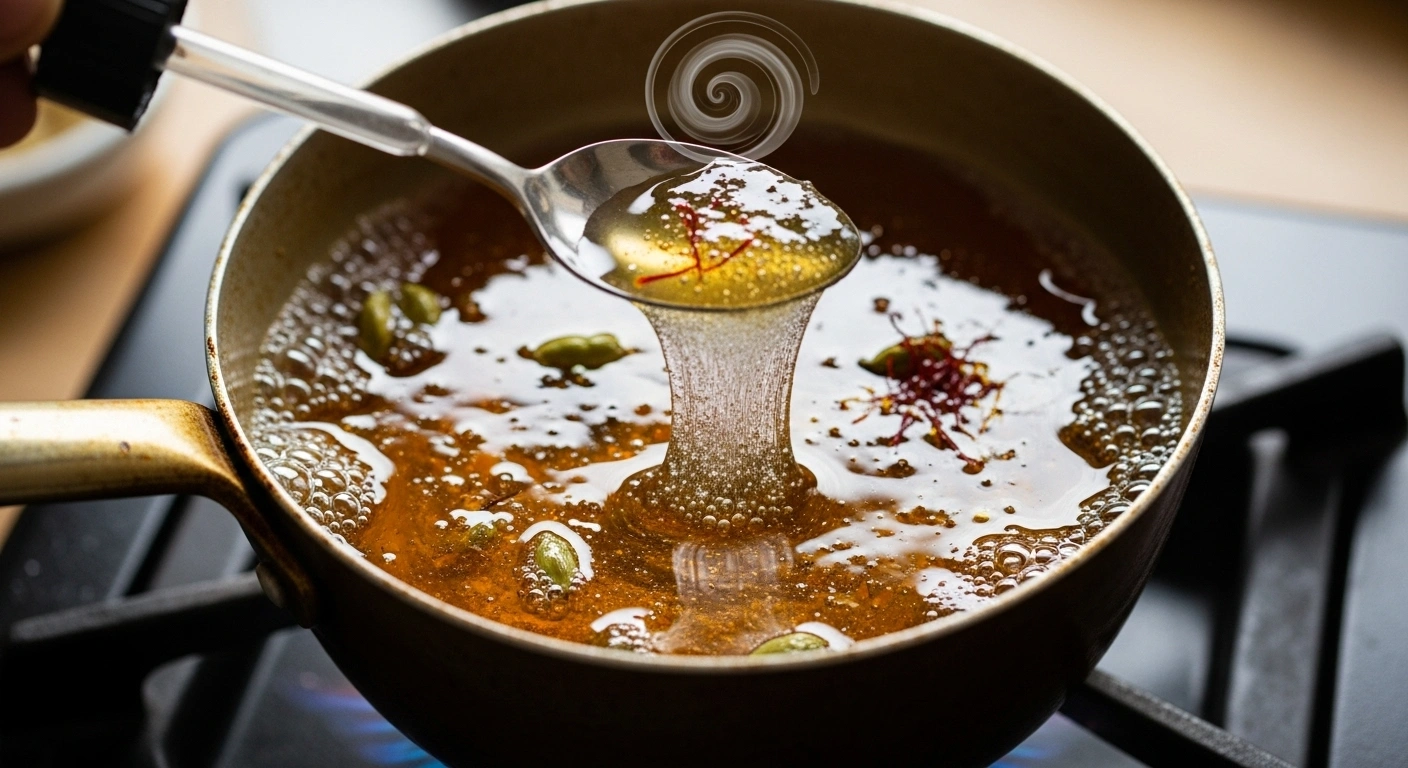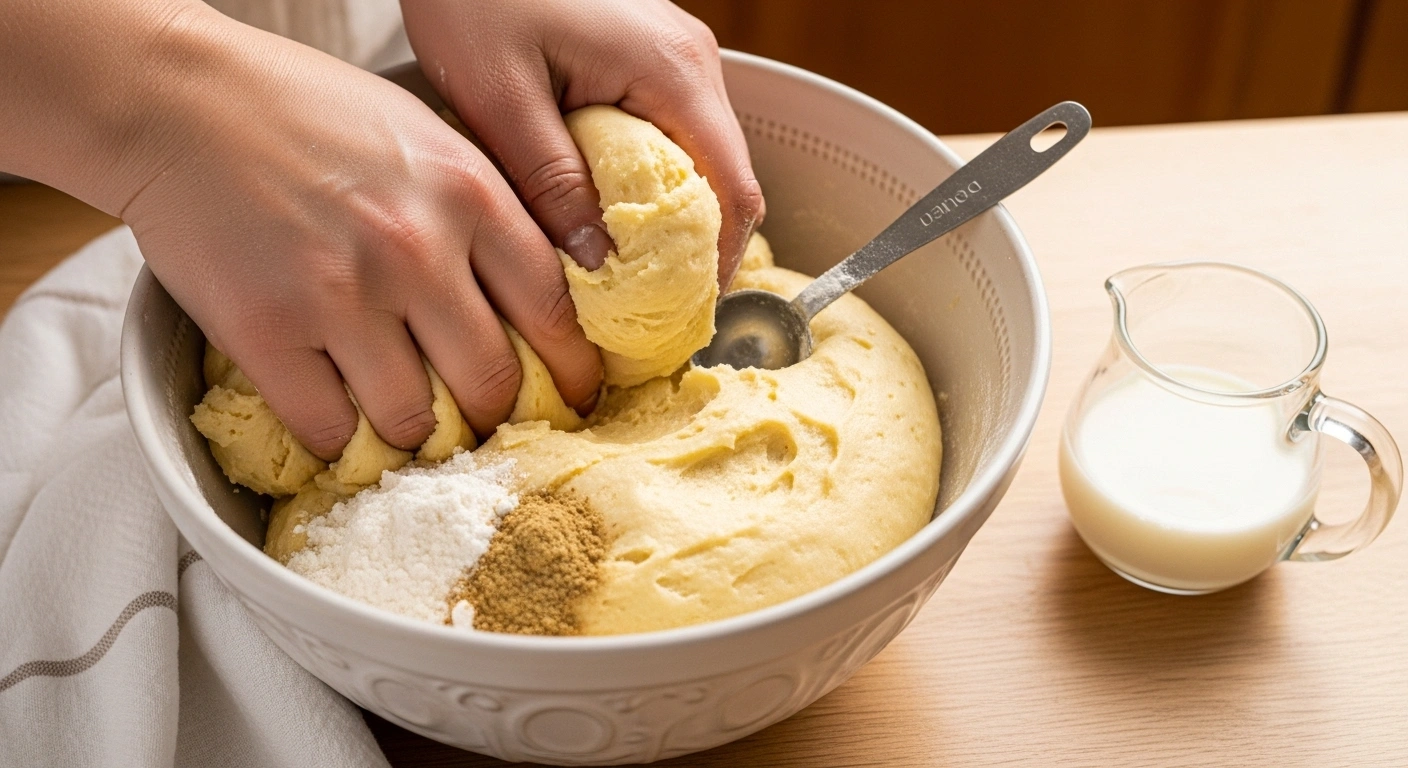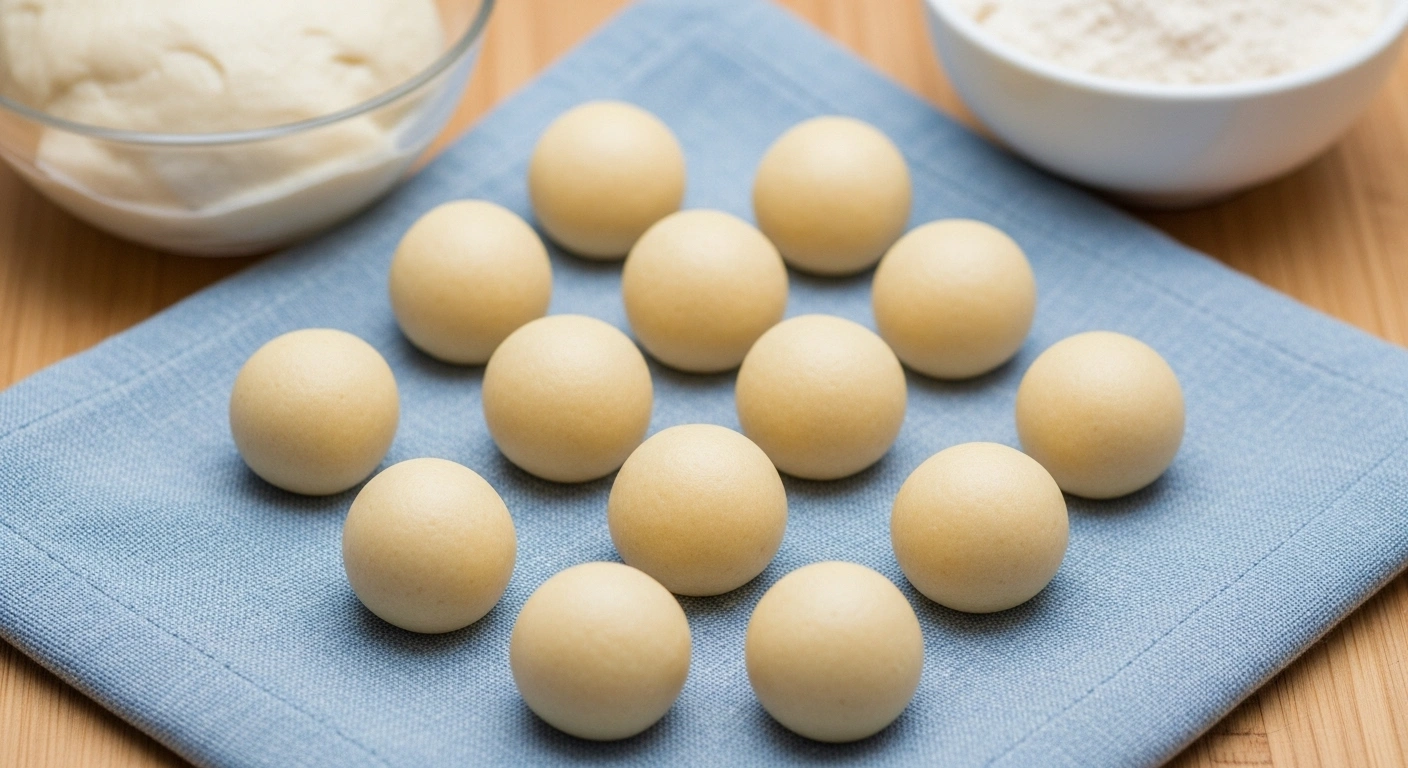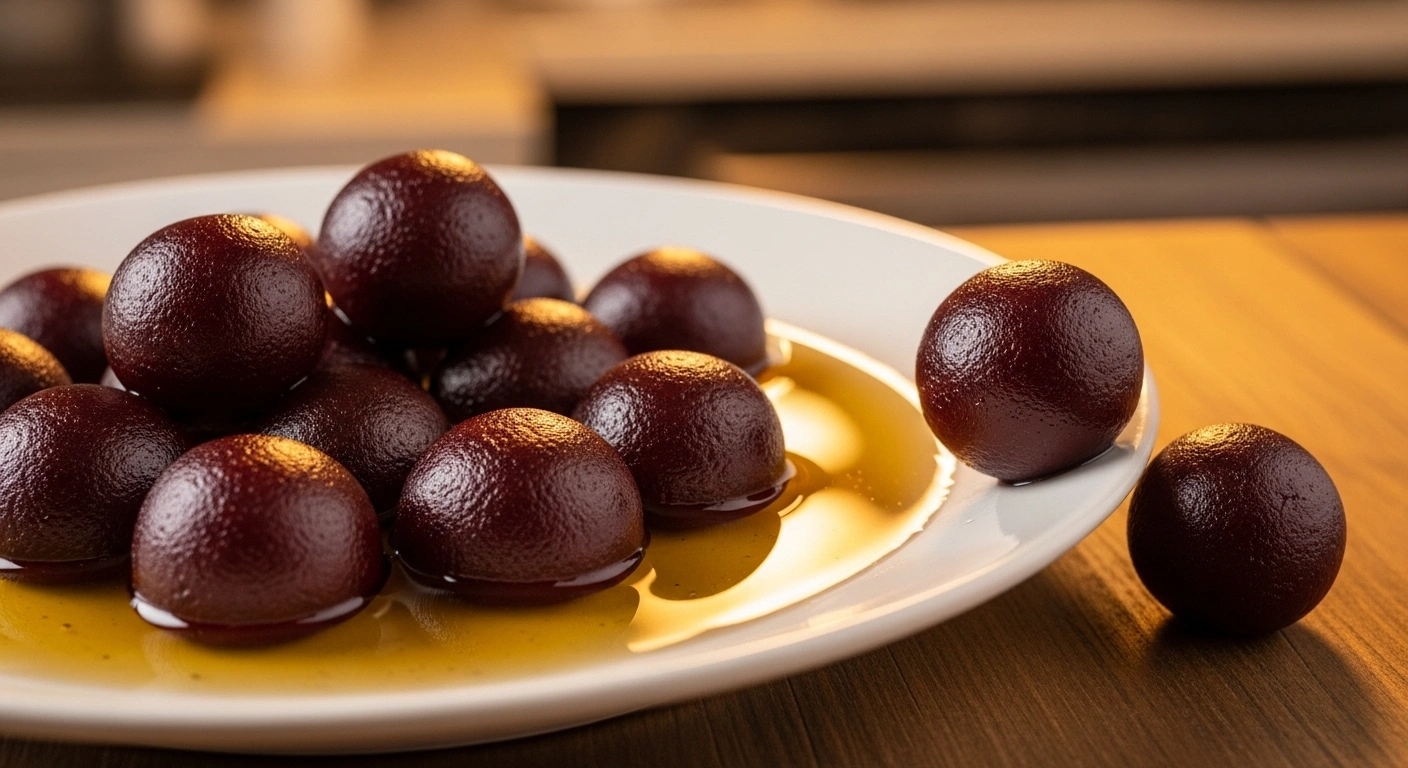Kala Jamun gets its name from its distinct dark (kala) outer layer compared to the golden-brown gulab jamun. The darker shade is achieved by slow frying the dough balls until they turn deep brown to almost black before being soaked in fragrant sugar syrup.
Made with a mixture of khoya (mawa), paneer, and a little flour, the dough is shaped into small round or oval balls. Traditionally, some recipes fill them with nuts or saffron strands for a richer bite. The fried balls are then immersed in warm sugar syrup infused with cardamom, rose water, or kewra essence.
The result is a sweet that is softer inside but slightly chewy outside, with a syrupy richness that makes it more indulgent than gulab jamun. Kala Jamun is often served during festivals like Diwali, Holi, Raksha Bandhan, or weddings, and pairs beautifully with vanilla ice cream for a fusion twist.
Kala Jamun gets its name from its distinct dark (kala) outer layer compared to the golden-brown gulab jamun. The darker shade is achieved by slow frying the dough balls until they turn deep brown to almost black before being soaked in fragrant sugar syrup.
Made with a mixture of khoya (mawa), paneer, and a little flour, the dough is shaped into small round or oval balls. Traditionally, some recipes fill them with nuts or saffron strands for a richer bite. The fried balls are then immersed in warm sugar syrup infused with cardamom, rose water, or kewra essence.
The result is a sweet that is softer inside but slightly chewy outside, with a syrupy richness that makes it more indulgent than gulab jamun. Kala Jamun is often served during festivals like Diwali, Holi, Raksha Bandhan, or weddings, and pairs beautifully with vanilla ice cream for a fusion twist.

